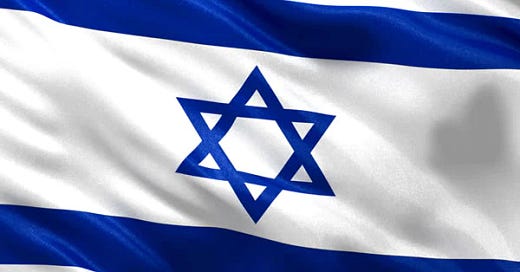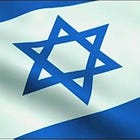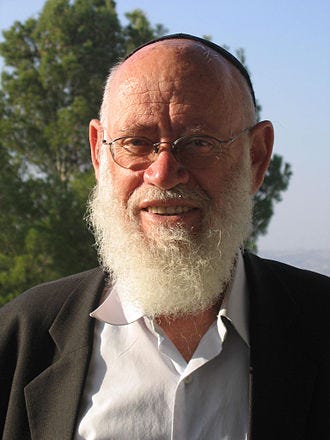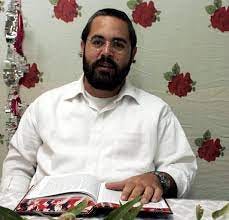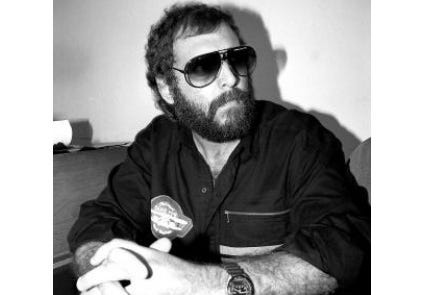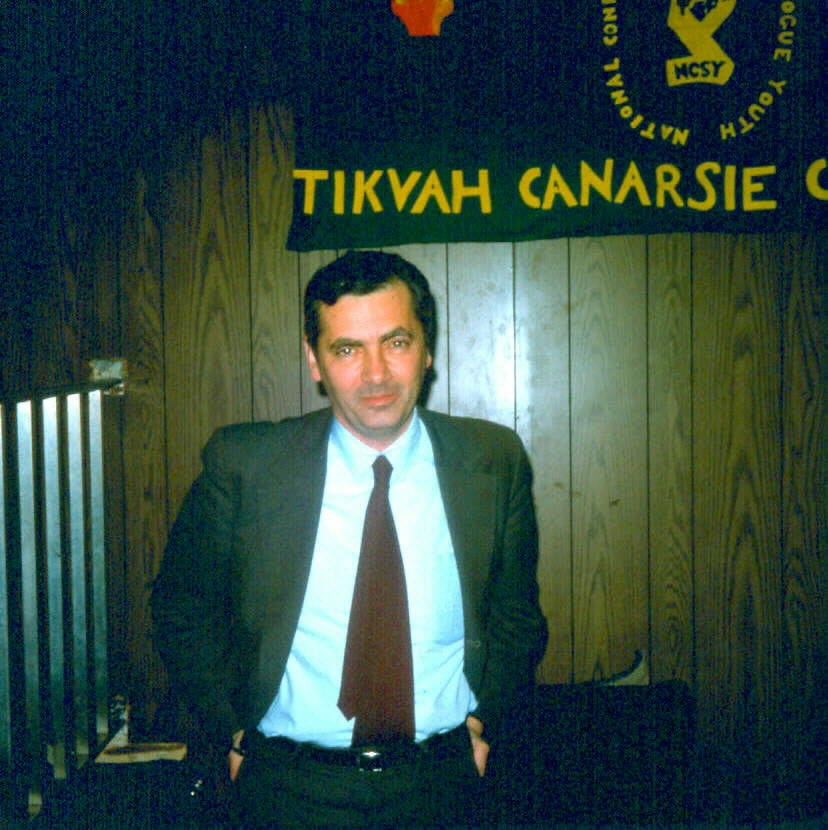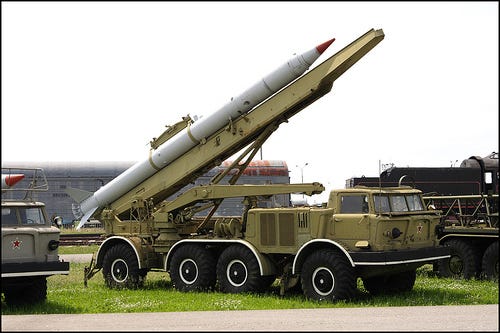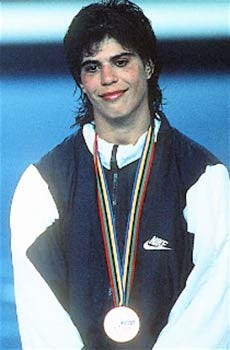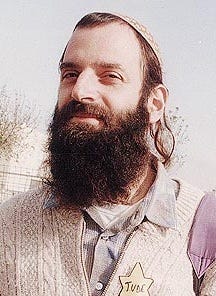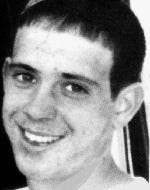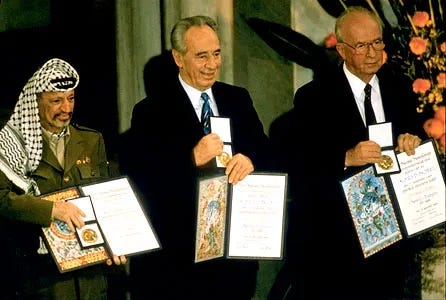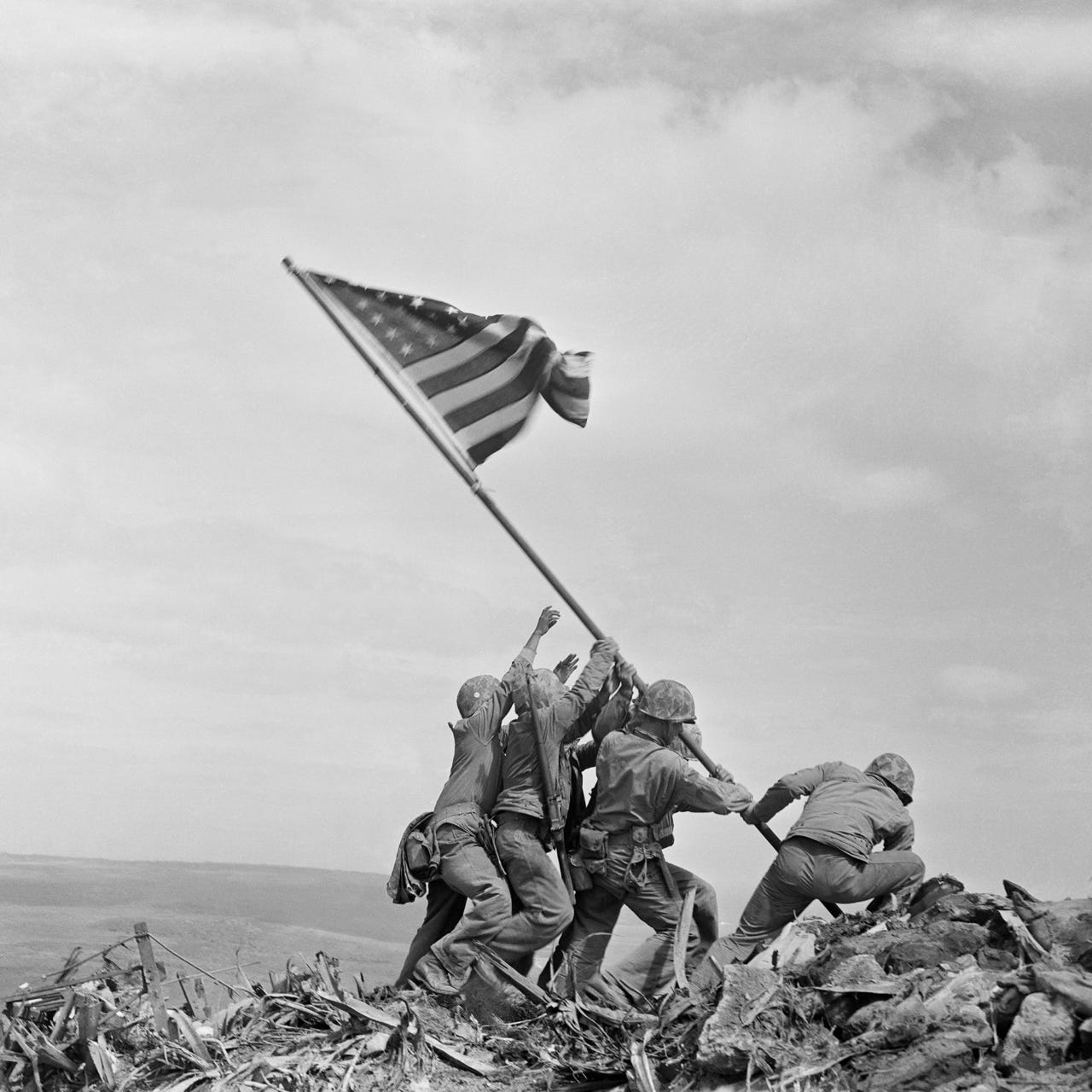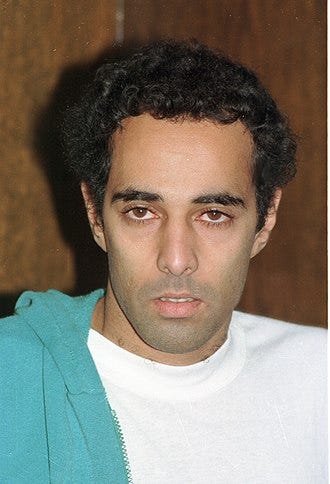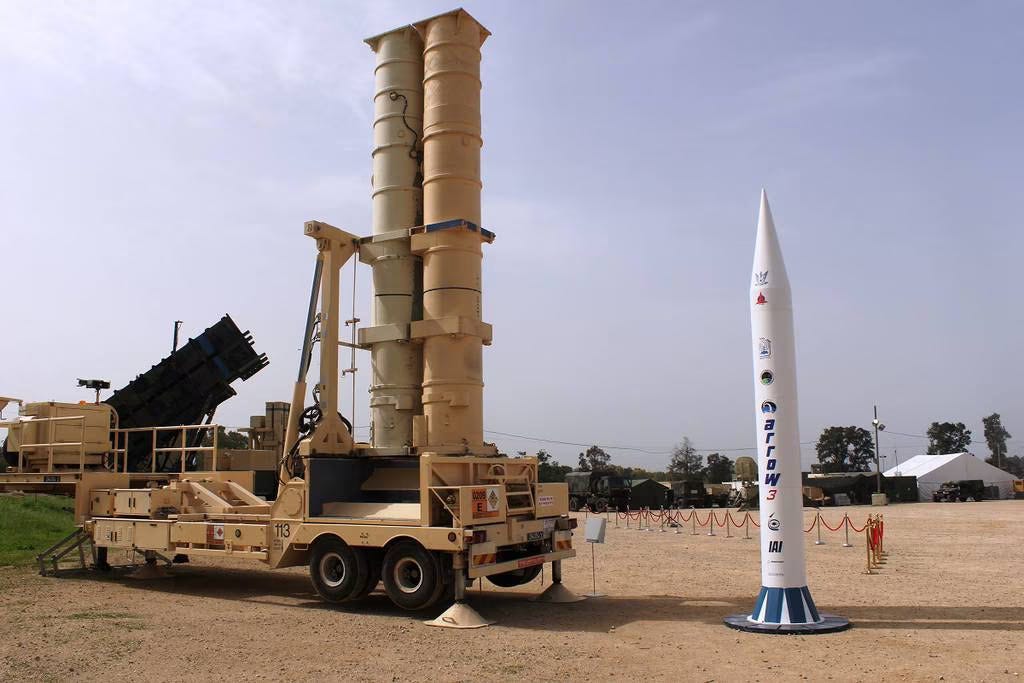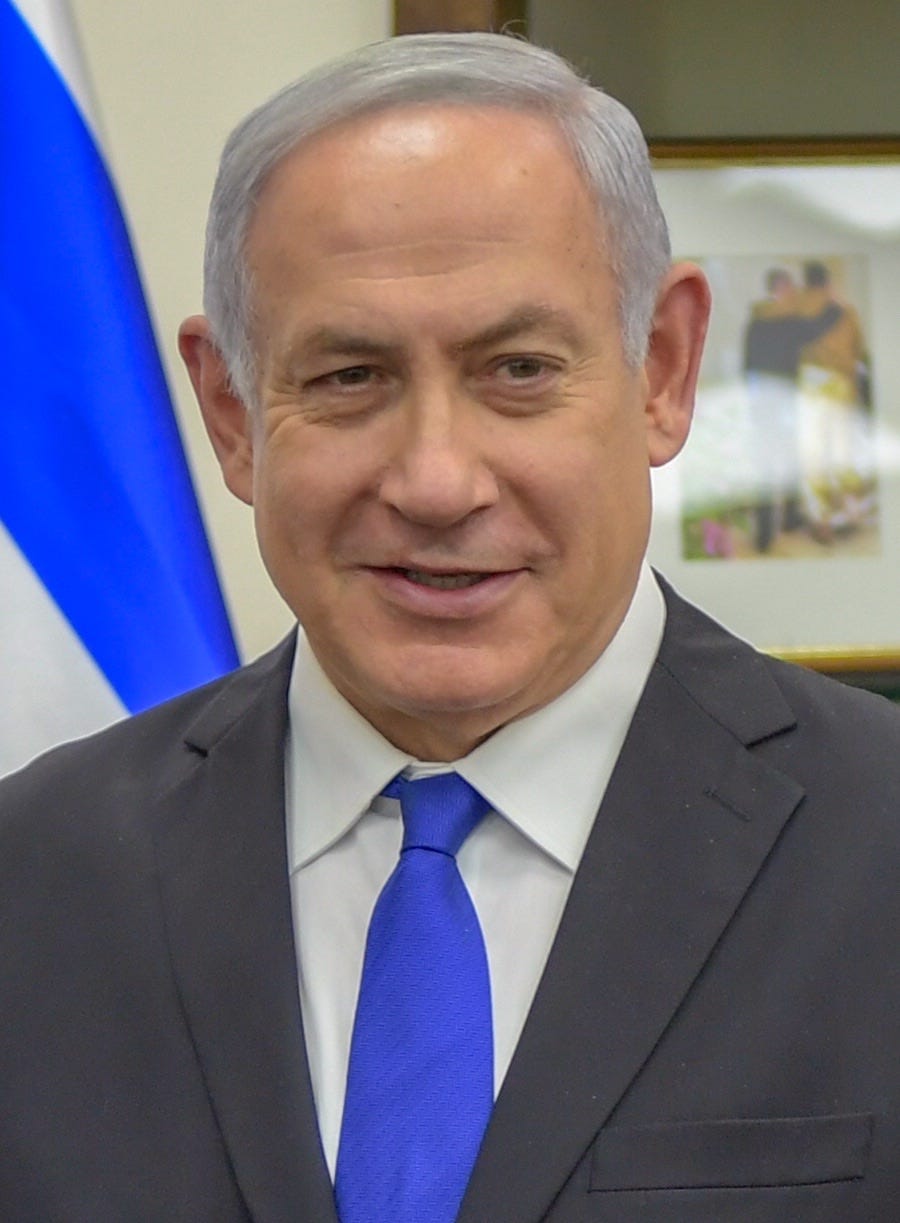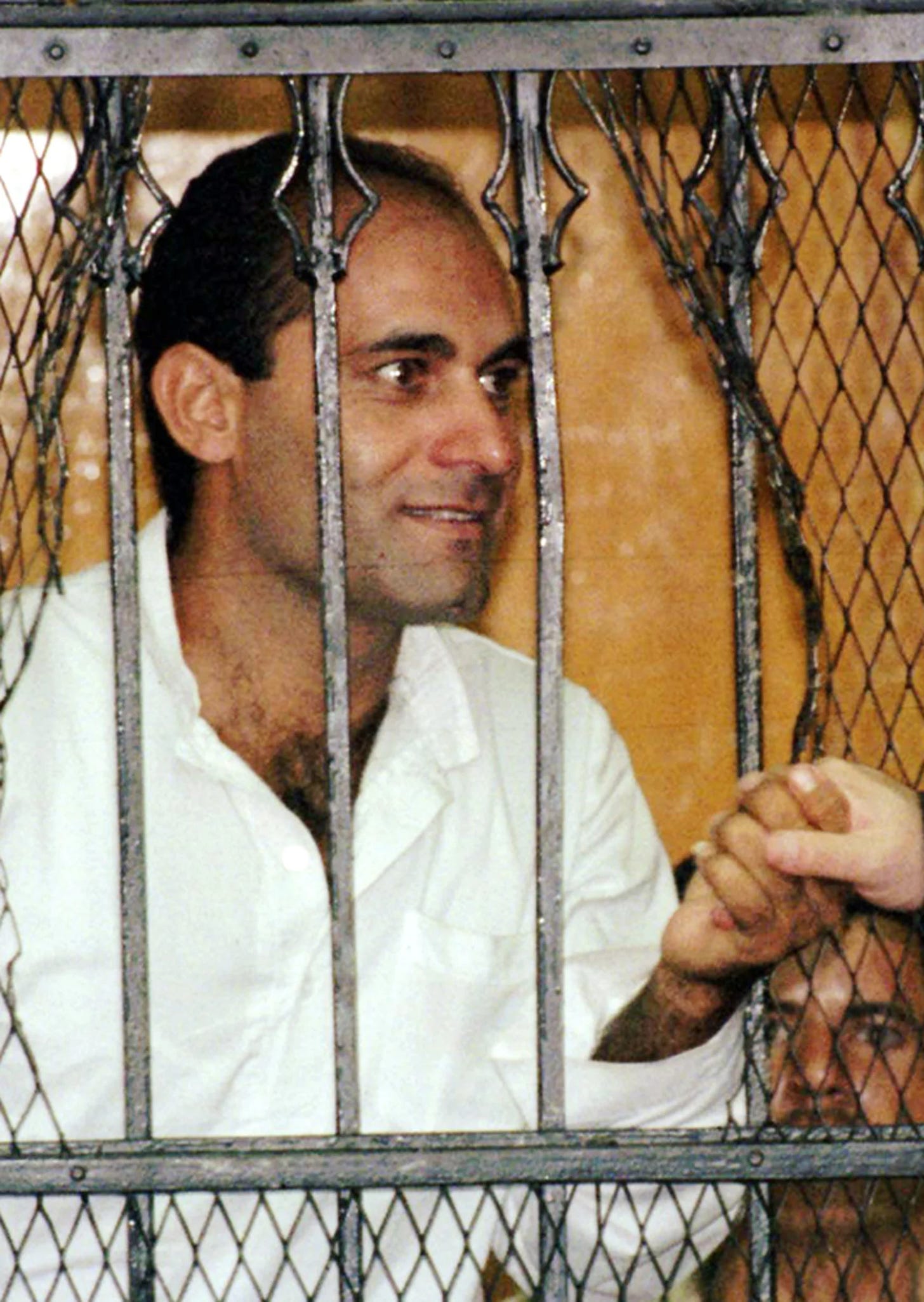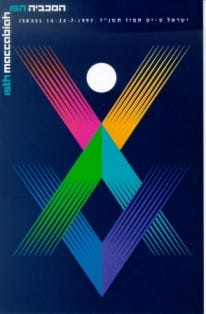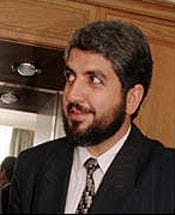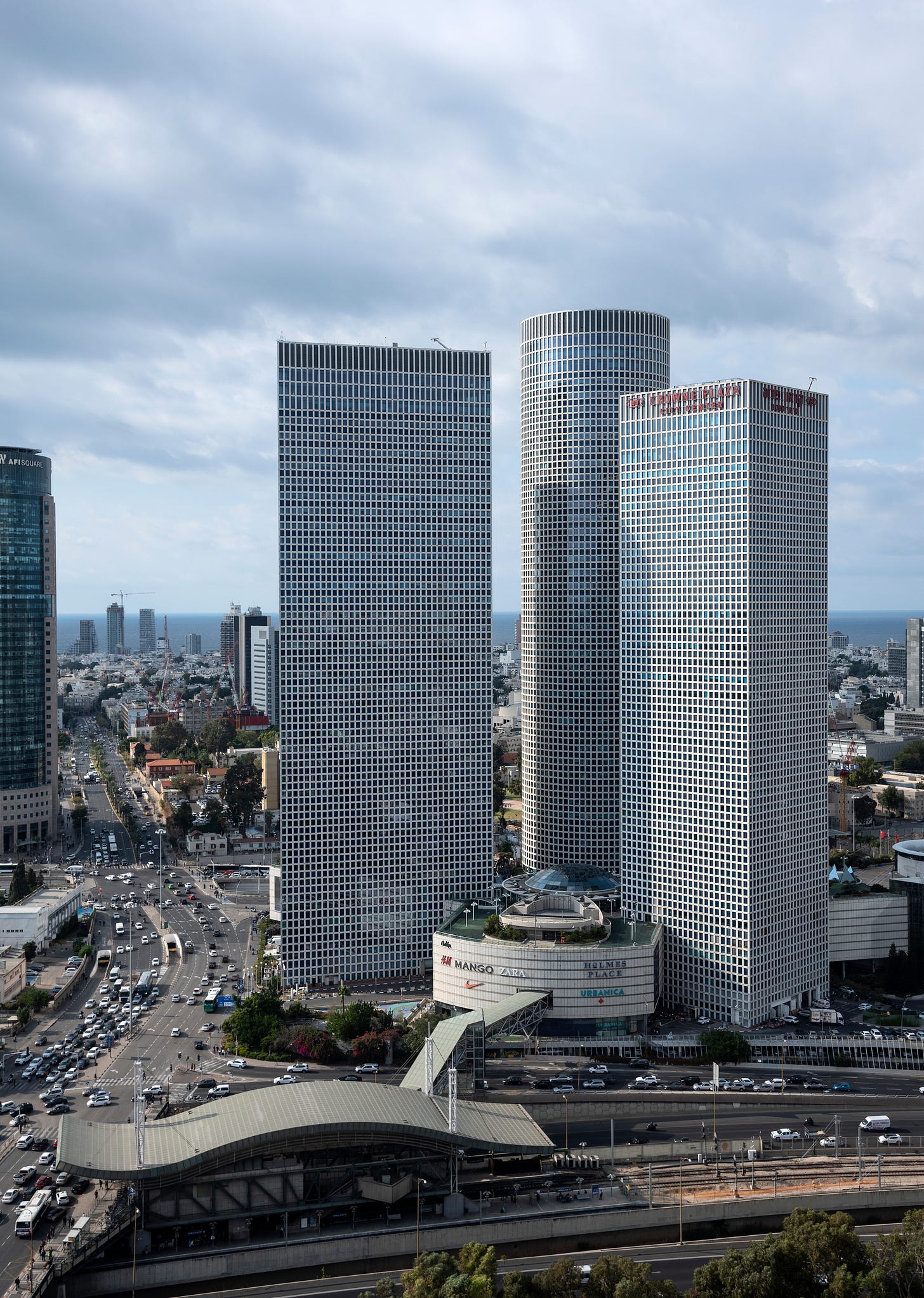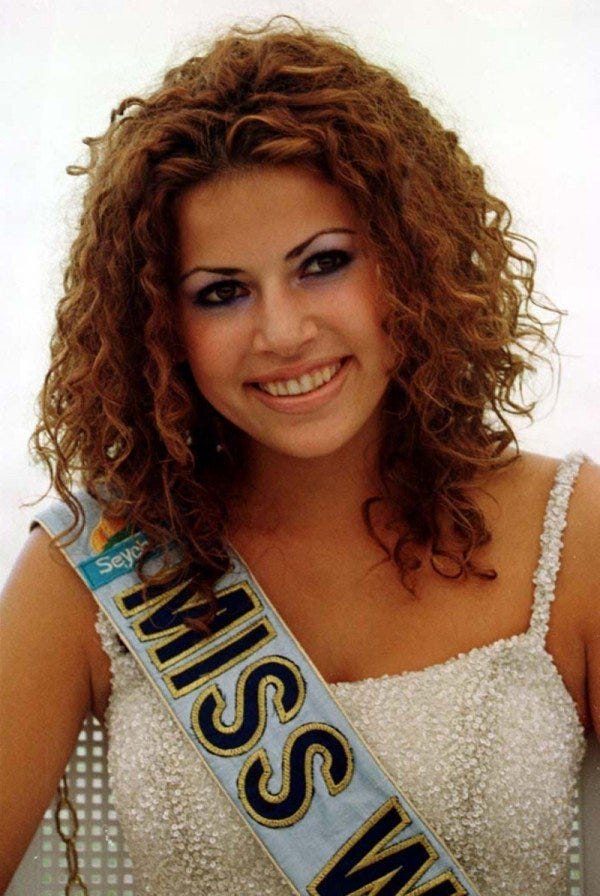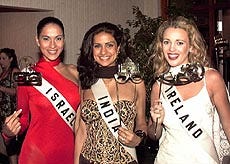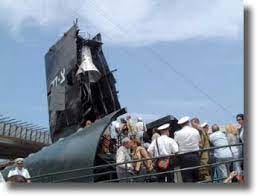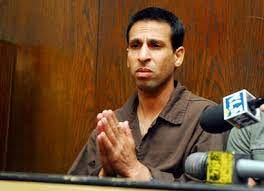In my last post I covered the end of the invasion of Lebanon to 1989. Click below if you missed it.
Today I will look at 1990 to 1999. Some of the images included in this post are graphic, just keep that in mind.
1990
February 22 1990: The USSR announces that they will not allow direct commercial flights to Israel.
February 27 1990: Poland resumes diplomatic relations with Israel.
March 15 1990: The Israeli government is dissolved by a no-confidence vote of 60 to 55 in the Knesset. The vote is called after Shimon Peres attempts to form a new government with the leftist and religious parties. The effort failed when the religious parties backed out of the agreement. It is the only time in Israeli history that a government is dissolved by a motion of no confidence.
March 28 1990: The US House of Foreign Affairs committee approve a $400,000,000 loan for housing Soviet Jews in Israel.
March 29 1990: Colonel Yehuda Meir, who was accused of ordering soldiers to "systematically break the bones" of nearly two dozen bound Arab demonstrators, denied the eight charges filed against him in the court martial proceedings, which included abuse, intentionally causing serious damage and behavior unacceptable for an officer.
April 26 1990: Israel's Supreme Court orders the evacuation of 20 Jewish settlers, from a settlement in the West Bank. However, an international outcry occurs when they move into a building in the Christian Quarter of the Old City.
May 3 1990: Bulgaria resumes diplomatic relations with Israel.
May 14 1990: Rabbi Moshe Levinger pleads guilty to the lesser charge of negligent homicide for September 30, 1988, killing of store owner Khayed Salah and the wounding of Ibrahim Bali. Levinger was sentenced to five months in prison.
May 20 1990: Ami Popper, an ex-IDF soldier who had been dishonorably discharged, shoots and kills seven Arab workers in the Israeli town of Rishon Legion. Popper committed the murder with a rifle that he stole from his brother, an active duty, IDF soldier.
May 30 1990: Palestinian Liberation Front militants attempt an attack on Nitzanim beach, near Tel Aviv using speedboats. Israeli Navy vessels and IAF aircraft intercepted the militants, killing four and capturing twelve.
July 28 1990: A bomb explodes on a Tel Aviv beach, killing Marnie Kimelman, a 17-year-old Canadian tourist. No one ever claims credit for the attack and no one was ever caught.
October 18 1990: Bank robber Ronnie Leibowitz nicknamed "Ofnobank" (a combination of the Hebrew words "motorcycle" and "bank"), who robbed 21 banks in the Tel Aviv area is captured after an extensive police investigation. When questioned, Leibowitz admitted to all his bank robberies and fully cooperated with police investigators. A few days after his capture, he returned all the stolen money. He was sentenced to twenty years in prison, but his sentence was reduced to 14 years after an appeal to the Supreme Court of Israel. The prosecution agreed to this reduction as well. After serving eight years in prison, he was granted a presidential pardon and released.
November 5 1990: Meir Kahane, American-Israeli rabbi, former Knesset member, and ultra-nationalist writer, is assassinated in a Manhattan hotel, after concluding a speech warning American Jews to emigrate to Israel before it was "too late”. He is shot by El Sayyid Nosair, an Egyptian-born American citizen. Nosair is acquitted of the murder, but will later be convicted of playing a role in the first World Trade Center bombing.
1991
January 17 1991: During the Gulf War, Iraq fires eight Scud missiles into Israel in an unsuccessful bid to provoke Israeli retaliation and break up the international coalition arrayed against them.
January 22 1991: When Iraq fires three more Scuds at Israel a US Patriot anti-missile battery fires a missile to intercept them. Unfortunately all four missiles end up landing in Ramat Gan. Three elderly people die of heart attacks and 96 are wounded during the incident.
April 8 1991: In a verdict handed down by a military tribunal Colonel Yehuda Meir was found guilty of brutality, for his orders to break the bones of nearly two dozen bound Arab detainees. He was stripped of his rank by a special military court, and discharged from the army as a private.
May 24–25 1991: The Israeli military conducts Operation Solomon, a covert operation to bring Ethiopian Jews to Israel. 35 Israeli aircraft, including IAF C-130s and El Al Boeing 747s transported 14,325 Ethiopian Jews to Israel in 36 hours. One of the aircraft, a 747, carried at least 1,088 people, including two babies who were born on the flight, and holds the world record for the most passengers on an aircraft. All total eight children were born during the airlift.
October 30 – November 1991: The Madrid Conference is held. It was an attempt by the international community to revive the Israeli-Arab peace process through negotiations, involving both Israel and Arabs, as well as Jordan, Lebanon and Syria. While, nothing concrete was decided, the conference paved the way for talks in the future.
December 16 1991: UN General Assembly Resolution 4686 revokes Resolution 3379, which stated Zionism was racist. Israel had made revocation of resolution 3379 a condition for Israel's participation in the Madrid Peace Conference of 1991. in the history of the UN, this is the only resolution that has ever been revoked.
1992
July 30 1992: Yael Arad (no relation to the missing IAF aviator) wins a silver medal in judo at the 1992 Summer Olympics in Barcelona. She was the first Israeli athlete to win an Olympic medal.
October 4 1992: El Al cargo flight 1862, a Boeing 747 crashes into a high-rise apartment building in Amsterdam, after two of it's engines fall off in flight. 43 people, four people on the plane and 39 people on the ground, were killed, and scores were wounded.
1993
July 9 1993: A five-judge panel of the Supreme Court of Israel overturned the guilty verdict of John Demjanjuk on appeal. The Supreme Court upheld the lower court's rulings on the authenticity of the Trawniki card and the falsity of Demjanjuk's alibi but ruled that reasonable doubt existed that Demjanjuk was Ivan the Terrible.
July 25 1993: Israel launches Operation Accountability, a week long attack against Hezbollah forces in Southern Lebanon. The goals of the operation were to strike directly at Hezbollah, to make it difficult for Hezbollah to use Southern Lebanon as a base for striking Israel and to displace refugees in the hopes of pressuring the Lebanese government to intervene against Hezbollah. During the operation, Israel destroyed thousands of houses and buildings resulting in 400,000 civilians being displaced from southern Lebanon with half of them heading to Beirut. Israeli forces also destroyed Lebanese infrastructure, including electricity stations and bridges. Hezbollah retaliated by firing 150 rockets against Israeli civilian targets, though it inflicted significantly fewer casualties. They were also accused of hiding small arms in civilian house. Ultimately, Israel declared that it attacked Hezbollah targets only to pressure Hezbollah to stop attacking Israeli civilians, while Hezbollah declared similar motive for their attacks along with their aim of liberating Southern Lebanon. In addition to the deaths of 118 Lebanese civilians, there were two Israeli civilians killed by Hezbollah rocket attacks. One Israeli soldier was killed, and three wounded. Six Syrian soldiers were also killed. A disputed number of Hezbollah combatants were also killed. Lebanese Prime Minister Rafik Hariri said that eight had been killed, while Israeli Prime Minister Yitzhak Rabin claimed more than fifty.
September 13 1993: Israeli Prime Minister Yitzhak Rabin, PLO Chairman Yasser Arafat and US President Bill Clinton officially sign the Oslo Accords in a Rose Garden ceremony at the White House.

September 19 1993: Michael Jackson performs in Yarkon Park to a crowd of 70,000 people
November 4 1993: The first Israeli commercial television channel, Channel 2 begins broadcasting.
December 20 1993: The first agreement in the Oslo Accords is signed, between by Foreign Minster Shimon Peres for Israel, Mahmoud Abbas for the PLO and for the United States, Secretary of State Warren Christopher.
December 30 1993: Israel and the Vatican establish diplomatic relations.
1994
February 25 1994: Baruch Goldstein, an American Jew and a charter member of the Jewish Defense League, immigrated to Israel in 1983. He immediately became involved with Kach, a ultranationalist Zionist party, founded by Meir Kahane, where Goldstein maintained a strong personal relationship with Kahane. In 1994, the Jewish festival of Purim fell during the Muslim holy month of Ramadan. At the Cave of the Patriarchs (the burial place of Abraham, Sarah, Isaac and Jacob a site split into Jewish and Muslim parts), Goldstein entered the Hall of Isaac, where some 800 Muslims were at prayer. He was dressed in his army uniform and carried an IMI Galil rifle and four magazines of ammunition. He was not stopped by the guards, who assumed that he was an officer entering the tomb to pray in an adjacent chamber reserved for Jews. Standing in front of the only exit from the hall and positioned to the rear of the Muslim worshippers, he threw a grenade into the middle of the hall before opening fire, killing 29 people and wounding another 125. After someone in the crowd hurled a fire extinguisher, striking Goldstein in the head, he was overcome, disarmed and beaten to death. Goldstein was widely denounced in Israel and by communities in the Jewish diaspora, with many attributing his act to insanity. Israeli prime minister Yitzhak Rabin condemned the attack, describing Goldstein as a "degenerate murderer" and "a shame on Zionism and an embarrassment to Judaism". The massacre immediately set off mass protests by Palestinians throughout the West Bank, and during the ensuing clashes, a further 20 to 26 Palestinians were killed while 120 were injured in confrontations with the Israeli military. Nine Jews were also killed.
April 6 1994: On Holocaust Remembrance Day, a Hamas militant pulls his explosives-filled car next to a bus stop near two schools in Afula, as passengers are boarding a bus. When he detonates the bomb eight Israelis are killed and 55 are wounded.
April 13 1994: In Hadera a week after the Afula bus bombing, on Fallen Soldier and Victims of Terrorism Day, Amar Salah Diab Amarna, a Hamas terrorist, boarded the bus to Tel Aviv. At 9:40 AM, as the bus was pulling out of the station, Amarna placed the bag containing the bomb on the floor of the bus, "where shrapnel could rip through vital arteries in the groin area," and detonated it. As Israeli rescue workers converged on the scene of the explosion, a second pipe bomb exploded. Five Israelis are killed and another 30 are wounded.
May 4 1994: Israel and the PLO sign the Gaza-Jericho Agreement. The Agreement provided for limited Palestinian self-rule in the West Bank and Gaza Strip within five years. Israel also promised to partly withdraw from the Jericho region in the West Bank and the Gaza Strip, within three weeks of the signing. The Palestinian Authority was also created by the Agreement.
May 18 1994: Israeli forces withdraw from Jericho and Gaza City.
May 21 1994: Israeli commandos kidnap Amal Security Director Mustafa Dirani from his home in the village of Kasarnaba, in the Eastern Bekaa Valley. The Israelis believe that he has information on the whereabouts of missing IAF Navigator Ron Arad. Dirani admits to turning him over to Hezbollah, who in turn hands him over to the Iranian Revolutionary Guard. In 2004, Dirani, along with 22 other Lebanese detainees, and 400 Arab prisoners, was released in exchange for the bodies of three Israeli soldiers and captured IDF Colonel Elchanan Tannenbaum.
July 5 1994: Yasser Arafat became the first president of the Palestinian Authority.
July 25 1994: Israel and Jordan sign the Washington Declaration, which formally ends the state of war that had existed between them since 1948.
July 26 1994: A vehicle packed with 30 pounds of explosives exploded at the Israeli Embassy in London, wounding 20. Thirteen hours later another car bomb exploded outside Balfour House, which at the time was the London HQ of one of the largest Jewish charities, The United Jewish Israel Appeal (UJIA), injuring six. Hezbollah was suspected of both bombings
August 8 1994: The Wadi Araba Crossing opens, becoming the first official border crossing between Israel and Jordan.
October 9 1994: An IDF soldier on leave, Nachshon Wachsman is hitchhiking when he is kidnapped by Hamas militants disguised as Jewish settlers. They later demand the release of Sheikh Ahmed Yassin and another 200 Palestinian Arab prisoners from Israeli prison in return for Wachsman's release.
October 14 1994: The Israeli elite special forces unit Sayeret Matkal, attempt to free Nachshon Wachsman held by Hamas terrorists in the village of Bir Nabala. The rescue fails and Wachsman is killed along with another IDF soldier and the three kidnappers.
October 19 1994: 21 Israelis and a Dutch national are killed after a suicide attack on a bus in Tel Aviv. Hamas claims responsibility for the attack.
October 26 1994: Israel and Jordan sign the Israel-Jordan Treaty of Peace at the Wadi Araba border crossing.
November 11 1994: Three Israeli soldiers are killed when a Arab detonated explosives strapped to his body as he rode a bicycle into an IDF checkpoint close to the village of Netzarim.
November 30 1994: 19-year-old female IDF Sargent List Gabai is killed by Hamas militant Wahib Abu Alrub with an axe in the center of Afula.
December 10 1994: Yitzhak Rabin, Shimon Peres and Yasser Arafat win the Nobel Peace Prize.
1995
January 22 1995: 19 Israelis, mostly soldiers, are killed and 62 are wounded, when two suicide bombers detonated themselves near Netanya. Palestinian Islamic Jihad claimed responsibility.
April 9 1995: Khaled Mohammed Khatib, a construction worker from the Nuseirat refugee camp, waited on the main highway running from Ashkelon to the settlements in the Gaza Strip in a car packed with explosives. At 11:45 AM, he rammed a bus carrying more than 60 Israeli soldiers and civilian passengers to the Jewish settlement of Kfar Darom. When he rammed the bus, he flipped a trigger switch in the steering column, detonating a bomb in his car. Seven Israeli soldiers and one American civilian (named Alisa Flatow) were killed and 52 passengers were wounded. Two hours later, Imad Abu Amouna used a suicide car-bomb against an Israeli police-escorted convoy of cars driving towards Netzarim. Nobody was killed, but thirty soldiers were wounded. Both attacks were the work of Palestinian Islamic Jihad.
July 18 1995: Three teenagers are crushed to death at the Arad Music Festival when thousands of teenagers without tickets try to enter the festival.
July 24 1995: A Hamas suicide bomber detonated himself on a crowed commuter bus in Ramat Gan, near the Israeli Diamond Exchange. Six people were killed and 33 were wounded.
August 21 1995: Hamas suicide bomber Sufian Jabarin detonated herself at 7:45 AM as a commuter bus passed through the Ramat Eshkol neighborhood of Jerusalem. Four people were killed and more than one hundred were wounded. Many of the victims were policemen on their way to work at the national police headquarters and summer students en route to the Mount Scopus campus of Hebrew University. One of the victims was an American teacher from Connecticut who was visiting Israel to gather material for her classes on Israeli history.
September 28 1995: The Interim Agreement on the West Bank and Gaza Strip (also called Oslo II) is signed. It includes provisions for the transfer of Bethlehem, Jenin, Nablus, Ramallah and 450 other villages to the Palestinian Authority.
October 26 1995: two Mossad agents on a motorcycle, pull up next to Islamic Jihad leader Fathi Shikaki near his hotel in Malta and shoot him six times in the head.
November 4 1995: Radical ultranationalist Yigal Amir, who opposes the peace process, shoots and kills Israeli Prime Minister Yitzhak Rabin and wounds one of his bodyguards, after a peace rally in Tel Aviv.
November 8 1995: After a petition by Alice Miller, the Israeli Supreme Court rules that the Air Force must open its pilot training course to women.
November 11 1995: The 1995 census finds Israel has a population of 5,548,523.
December 12 1995: Nablus passes to the control of the Palestinian Authority.
December 21 1995: Bethlehem passes to the control of the Palestinian Authority.
1996
January 5 1996: In October 1995, Shin Bet operatives approached Kamil Hamad, who had given them information before. His nephew was also a childhood friend of Yahya Ayyash, Hamas' best bomb maker. Hamad demanded money and Israeli identity cards for himself and his wives but agreed to help after Shin Bet operatives threatened to inform Hamas of his betrayal. Shin Bet agents gave Hamad a cell phone, and told him it was bugged so they could listen in on Ayyash's conversations. They did not tell Hamad that, in addition to eavesdropping devices, it also contained 15 grams of RDX explosive. Hamad gave the phone to his nephew Osama, knowing that Ayyash regularly spent the night at his nephew's house and would used Osama's phones. At 8:00 am Ayyash's father called him on Osama's phone. As Ayyash spoke with his father, when it was confirmed that it was Ayyash on the phone, Shin Bet remotely detonated it, killing Ayyash instantly.
January 10 1996: King Hussein of Jordan arrived in Tel Aviv for his first visit to Israel.
January 19 1996: Three Hamas militants are killed in an attack on an Israeli army roadblock. One Israeli soldier is injured.
January 26 1996: Israel gives $400,000 to the widow of the Moroccan waiter who was mistakenly identified as Ali Hassan Salameh, one of the perpetrators of Olympic massacre, and killed in Norway in 1973.
February 19 1996: Israel successfully test fires its Arrow-2 anti-ballistic missile.
February 25 1996: Two suicide attacks rock Israel. The first ripped through a commuter bus during morning rush hour in Jerusalem, killing 23 people, including two Americans, and injuring 49. Forty-five minutes later, a second bus exploded southwest of Jerusalem in Ashkelon, killing two people and injuring 31. Hamas claimed credit for both bombings, saying they were in revenge for the killing of Yehiya Ayyash and mark the second anniversary of the Hebron massacre.
March 3 1996: Six days after two bombings, another Hamas suicide bomber detonates a bomb on a bus in Jerusalem, killing 19 and injuring six others.
March 4 1996: A Hamas suicide bomber detonates a bomb outside the Dizengoff Center, the largest shopping mall in Tel Aviv. The last killed 20 and wounded 75. Some of the victims were children celebrating the Jewish holiday of Purim.
March 27 1996: Yigal Amir, assassin of Yitzhak Rabin is sentenced to life plus seven years in prison.
April 11 1996: After multiple terrorist attacks against Israel coming from Lebanon, Israel launches Operation Grapes of Wrath. The operation was a 17 day effort to drive Lebanese civilians from the southern portion of the country to put pressure on the Lebanese government to confront Hezbollah. Israel issued warnings, in the form of leaflets dropped from the air and through radio broadcasts, to the inhabitants of 44 (later extended to 88) south Lebanese villages to evacuate their homes before 2:30 PM the following day. The attacks on the villages started 4:30 PM.
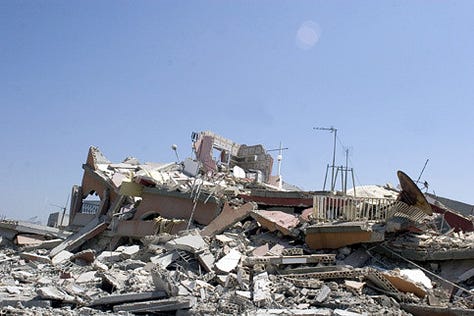

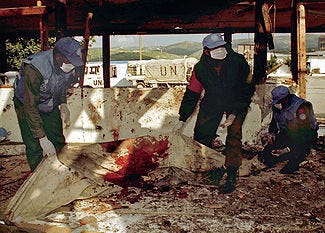
April 13 1996: Abbas Jiha, a farmer and volunteer ambulance driver, was driving a Volvo, with the word "ambulance" written on it in red. He was taking wounded people as well as four of his children to Sidon. An Israeli Apache helicopter chased the car and fired two missiles at it. Six civilians were killed out of the 13 passengers who were escaping the village.
April 16 1996: Around 5 AM, IDF helicopters were flying over the village of Nabatieh Fawk, they fired rockets at an occupied two-story house where a family was sleeping, completely demolishing it. They also hit two other buildings. One adult and eight children were killed. The children ranged in age from 17 to four days old. Two other teens were wounded.
April 18 1996: By April 14, 745 Lebanese fleeing the Israeli bombardment, took shelter in a United Nations compound at Qana. The base has been a UN headquarters for 18 years and was well-marked on Israeli maps, and all buildings were painted white with large black UN on every side and the roofs. It was currently occupied by a UNFIL force of Fijians. Beginning on the second day of Operation Grapes of Wrath, the IDF had been responding to any Hezbollah attacks with return fire within 10 minutes. On two separate occasions between noon and 2 pm on the 18th, Hezbollah had fired eight rockets from positions between 300 and 600 meters from the UN compound. Israeli Special Forces were sent to investigate. As they neared the area of the rocket launches, they came under 120 mm mortar fire from a position, no more than 170 meters from the camp. The IDF soldiers called for artillery support to cover their withdrawal and an artillery battery just inside Lebanon fired 36 rounds of 155 mm rounds, 26 rounds that were set to explode on impact and ten were set to explode 30 feet above the surface. All the rounds missed the target and hit the UN base. As a result of the shelling 106 civilians died, one Christian, the rest Shias, with more wounded. One man, Saadallah Balhas, lost 37 members of his extended family in the strike. Four Fijian UNIFIL soldiers were also wounded.
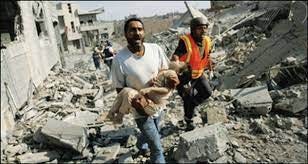
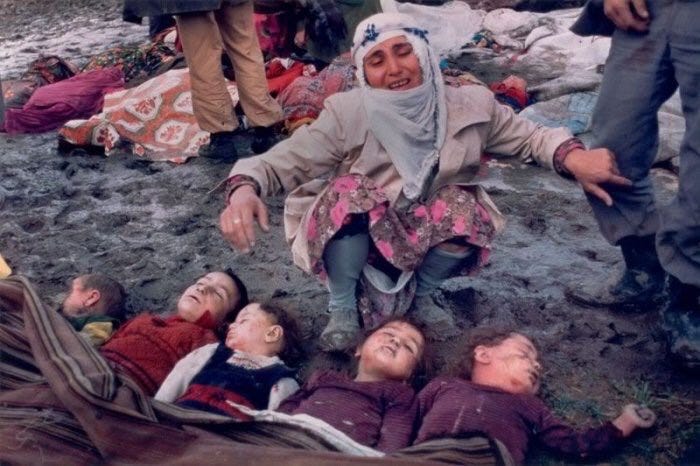
The Israeli government immediately expressed regret for the loss of innocent lives, saying that the Hezbollah position and not the UN compound was the intended target of the shelling, and that the compound was hit "due to incorrect targeting based on erroneous data." Army Deputy Chief of Staff Matan Vilnai stated that the shells hit the base not because they were off target, but because Israeli gunners used outdated maps of the area. He also stated that the gunners miscalculated the firing range of the shells. The UN appointed military advisor Major-General Franklin van Kappen of the Netherlands was sent to investigate the incident. His conclusions were: (a) The distribution of impacts at Qana shows two distinct concentrations, whose mean points of impact are about 140 metres apart. If the guns were converged, as stated by the Israeli forces, there should have been only one main point of impact. (b) The pattern of impacts is inconsistent with a normal overshooting of the declared target (the mortar site) by a few rounds, as suggested by the Israeli forces. (c) During the shelling, there was a perceptible shift in the weight of fire from the mortar site to the United Nations compound. (d) The distribution of point impact detonations and air bursts makes it improbable that impact fuses and proximity fuses were employed in random order, as stated by the Israeli forces. (e) There were no impacts in the second target area which the Israeli forces claim to have shelled. (f) Contrary to repeated denials, two Israeli helicopters and a remotely piloted vehicle were present in the Qana area at the time of the shelling. While the possibility cannot be ruled out completely, it is unlikely that the shelling of the United Nations compound was the result of gross technical and/or procedural errors.
April 27 1996: Because of international condemnation from repeated attacks against civilians the Israeli government and Hezbollah negotiated the Israeli–Lebanese Ceasefire Understanding, an informal written agreement, under American diplomatic auspices. The agreement barred cross-border attacks on civilian targets, as well as using civilian villages to launch attacks. Because of Operation Grapes of Wraith 250 Lebanese civilians were killed and 350 were wounded, 62 Israeli civilians were also wounded. The damage to the Lebanese infrastructure was significant. Major bridges and power stations were destroyed and 2018 houses and buildings in South Lebanon were either completely destroyed or severely damaged. Lebanon's total economic damage was estimated at $500 million. Israel estimated the total damage it suffered at $53 million.
May 30 1996: The Likud Party led by Benjamin Netanyahu wins a narrow victory in the Israeli general election.
September 24 1996: Prime Minister Benjamin Netanyahu authorize the opening of an exit in the Arab Quarter of Jerusalem, for the Western Wall Tunnel, which prior Prime Minister, Shimon Peres had instructed to be put on hold for the sake of peace. This sparked violent riots throughout the West Bank and Gaza Strip. In three days of violence 16 Israeli soldiers and 60 Arabs were killed.
November 5 1996: Azzam Azzam, an Israeli Druze is arrested in Egypt on suspicion of spying for Israel. A military court in Cairo sentenced Azzam to 15 years imprisonment with hard labor.
December 30 1996: Benjamin Netanyahu proposed budget cuts, sparking protests from 250,000 workers, who went on strikes across Israel.
December 11 1996: PFLP gunmen attack a car carrying Israeli settlers near the settlement of Bet El, killing a woman and her 12-year-old son.
1997
February 4 1997: Two IDF CH-53 Sea Stallion helicopters collide at night near the remote kibbutz of She'ar Yashuvin in northern Israel, killing 77 soldiers.
March 13 1997: 80 seventh and eighth grade schoolgirls from the Fuerst School of Beit Shemesh, west of Jerusalem, were on a field trip to the Jordan Valley and the Golan Heights. Part of the trip was a visit to the "Island of Peace", a joint Israeli-Jordanian tourist resort under Jordanian rule. As they were heading towards the observatory, a Jordanian soldier stationed at the site opened fire on the group with an M-16. The perpetrator killed seven schoolgirls and wounded five others and a teacher before his rifle jammed, and other Jordanian soldiers overpowered him. After subduing the shooter, the Jordanian soldiers rushed to help the victims. Shortly after the attack, Jordanian soldiers lined up at the hospital the wounded were taking to, in order to donate blood. Also King Hussein went to offer condolences to families of the victims in person; it was seen as a sincere and unusual act in the history of the Israeli-Arab conflict. It deeply moved the mourning Israeli public and helped improve the relationship between the two countries after the attack. The perpetrator, Ahmad Daqamseh, was diagnosed with antisocial personality disorder by a Jordanian medical team. A five-member military tribunal subsequently sentenced him to 20 years of hard labor.
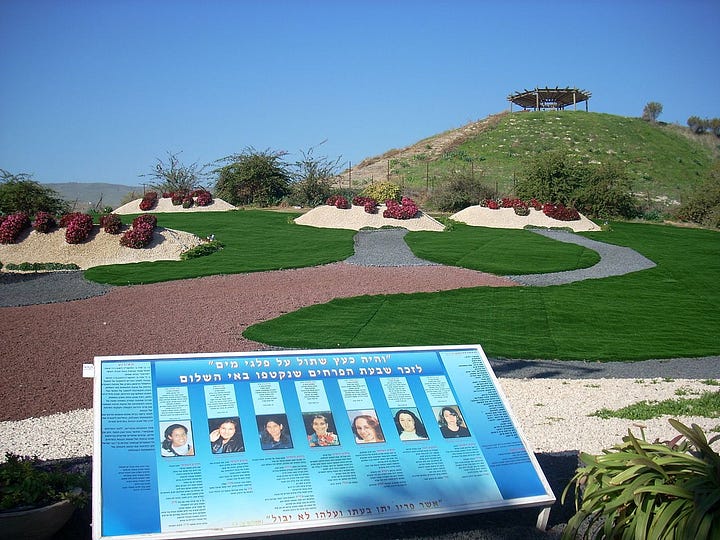
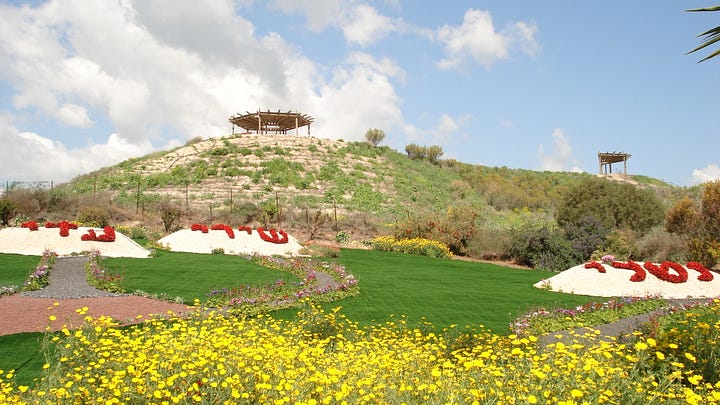
March 21 1997: Two attacks mark the eve of the Purim (A holiday which commemorates the saving of the Jewish people in Persia from genocide) . In the first an Arab suicide bomber detonated an explosive device concealed in a handbag in the entrance to the coffee shop Apropo in Tel Aviv. Three women were killed, one of whom was three months pregnant. The second attack involved two suicide bombers who carried bags filled with explosives and nails and detonated their explosive devices 150 feet apart almost simultaneously in the popular outdoor Mahane Yehuda Market central alley, killing 16 civilians, and injuring 178 people, many of them teenagers and tourists.
July 14 1997: During the Maccabiah Games (a sporting event open to Jews worldwide and Israeli citizens of any religion), a pedestrian bridge collapses over the Yarkon River, killing four and injuring 60 Australian athletes.
September 4 1997: Three Hamas suicide bombers blow themselves up at the Ben Yehuda Street pedestrian mall. Five are killed, including three 14-year old girls who had been dropped off shortly before the explosions
September 25 1997: In Jordan, two Mossad agents attempted to assassinate Khaled Mashal, the leader of Hamas' Jordan branch, by spraying a toxin on the back of his neck. The attempt was thwarted when Mashal’s bodyguard followed the operatives, after their attack. The agents are arrested and the rest of the assassination team take refuge in the Israeli Embassy.
The leader of the operation has the antidote but Jordanian doctors refuse to give it to Mashal unless they get the exact chemical formula, to prevent the Israelis from finishing the job. As Mashal’s condition worsens, King Hussein demands the formula or he will sentence the captured agents to death. US President Bill Clinton intervenes and compels Israeli Prime Minister Benjamin Netanyahu to turn over the formula. The head of Mossad, Danny Yatom, flew to Jordan, with Netanyahu's consent, bringing the formula to allow Jordanian doctors to treat Mashal. The doctors at the King Hussein Medical Center where Mashal lay in a coma, observed Mashal's symptoms to be consistent with an opioid overdose, when they administered the antidote, Mashal's condition quickly improved. As Yatom was landing in Amman another Israeli plane was also landing, this one also with just one passenger. It was Sheik Ahmed Yassin, who King Hussein demanded be released in exchange for the two arrested agents as well as free passage for the rest of the team in the embassy. Mashal is alive to this day.
1998
April 1 1998: The Azrieli Center, a complex of skyscrapers officially opens. The Azrieli Center Circular Tower becomes the tallest building in Israel at 613 feet.
November 12 1998: Miss Israel, Linor Abargil wins the Miss World title.
October 23 1998: Benjamin Netanyahu and Yasser Arafat sign the Wye River Memorandum. The Memorandum aimed to resume the implementation of the 1995 Interim Agreement on the West Bank and the Gaza Strip.
1999
February 14 1999: Over 250,000 Orthodox Jews demonstrate in Jerusalem over a Supreme Court ruling that Reform and Conservative Jews should have representatives on local religious councils.
March 9 1999: Rana Raslan becomes the first Arab-Israeli to be crowned Miss Israel.
March 17 1999: Aryeh Deri is convicted of taking bribes while serving as Interior Minister and is sentenced to four years in prison and receives a fine of 250,000 NIS (New Israeli Shekel). On the same day Ehud Barak is elected Prime Minister of Israel.
May 28 1999: A joint US–Israeli search team finds the wreck of the long-lost Israeli submarine INS Dakar in the Mediterranean Sea.
December 14 1999: Benny Sela was arrested by police responding to reports of an attack on a young woman and an eight-year-old girl. Police noticed that Sela's appearance matched descriptions of a Tel Aviv serial rapist, and during an investigation of his criminal record, it was noted that the Tel Aviv rapes had stopped while he was in prison. Detectives then took a DNA sample, which matched samples given by nine of the victims. Sela was indicted on 14 counts of rape, and under a plea bargain was sentenced to 35 years imprisonment.
We're almost through the 20th century and in the next episode I will cover the last year of the 20th century and the first two years of the 21st. The new millennium does not start well for anyone. I hope you are enjoying these posts and please feel free to share them with anyone who would be interested.

